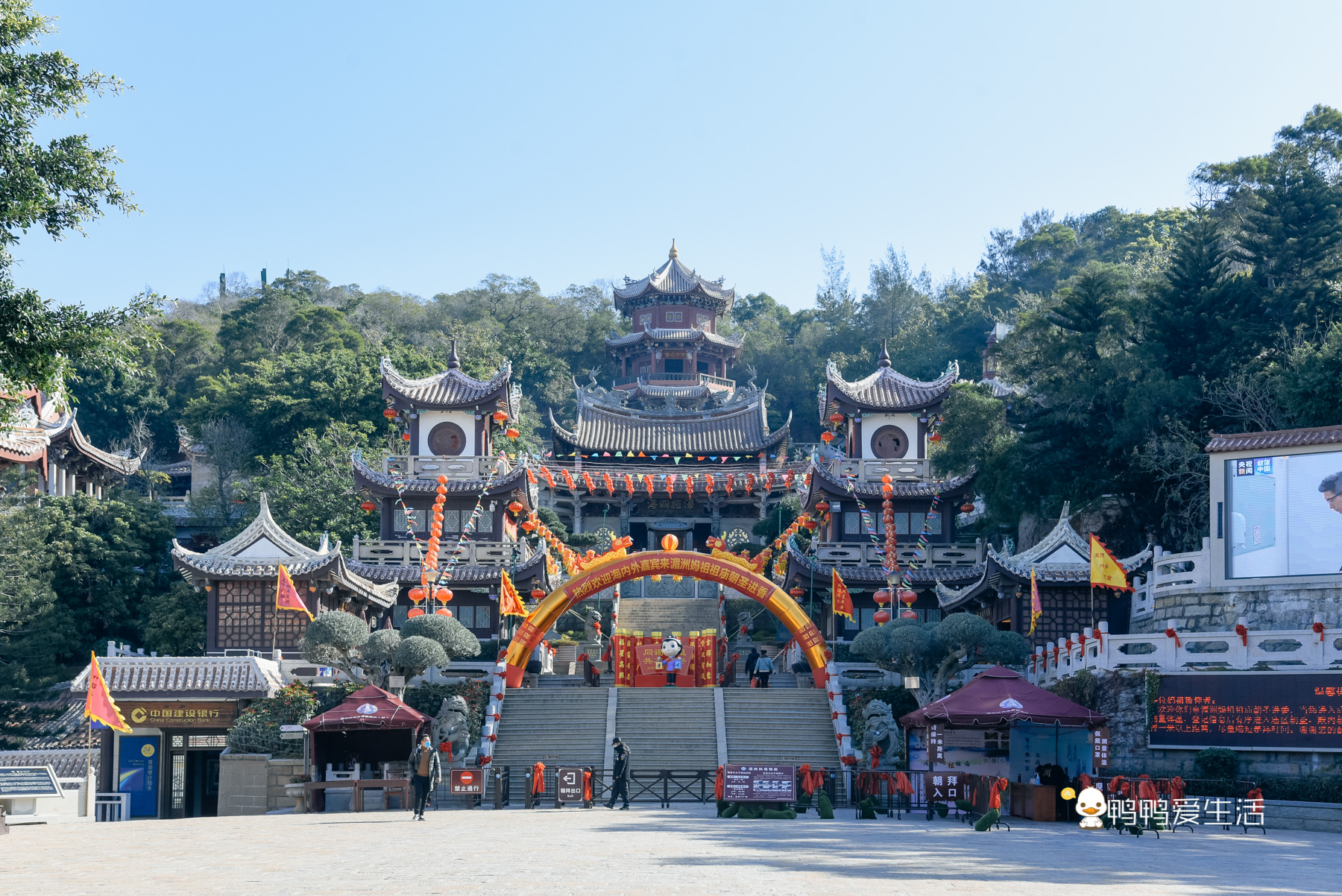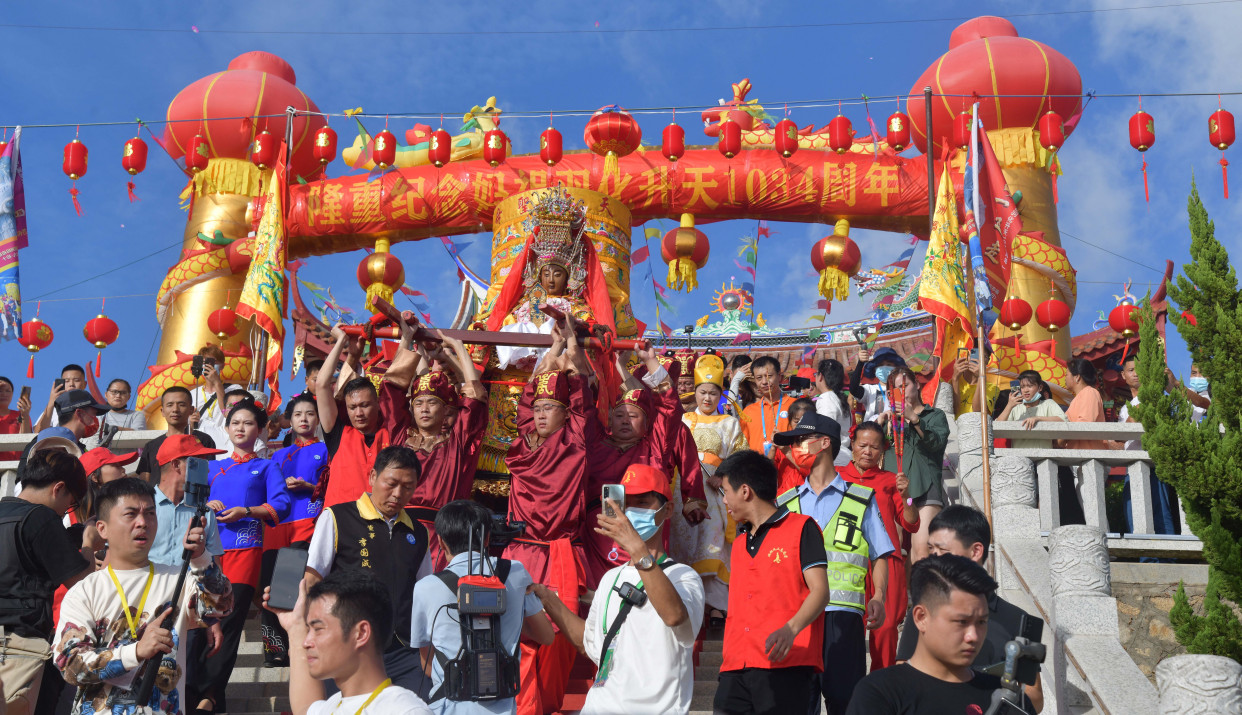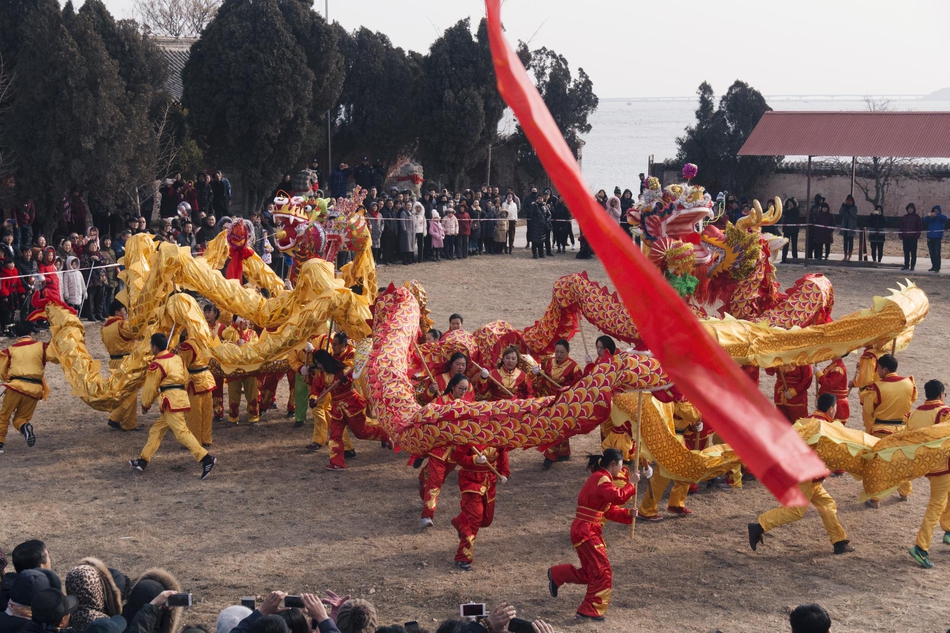Mazu Worship Festival
The grand and solemn scene of the Mazu Worship Ceremony on Meizhou Island, Putian, Fujian
The grand and solemn scene of the Mazu Worship Ceremony on Meizhou Island, Putian, Fujian
The Mazu Worship Festival is a traditional folk activity commemorating and worshipping Mazu, the goddess of the sea. It is mainly popular in coastal areas of southeastern China and overseas Chinese communities, with the most grand celebrations held on Meizhou Island in Putian, Fujian. As an important part of Chinese maritime culture, the Mazu Worship Festival, together with the Yellow Emperor Mausoleum Ceremony and the Confucius Worship Ceremony, is known as one of China's three major traditional ceremonies. In 2009, it was inscribed on the UNESCO Representative List of the Intangible Cultural Heritage of Humanity.
Mazu, originally named Lin Mo (also known as Lin Moniang), was born in 960 AD on Meizhou Island in Putian, Fujian, into a maritime family. Historical records show that Lin Mo was intelligent from a young age,精通 medicine, and always willing to help others. She was especially skilled at predicting changes in maritime weather and saved many fishermen and merchant ships from storms, earning the deep admiration of her fellow villagers.
Legend has it that at the age of 28, she tragically died while rescuing others at sea. To honor her kindness, the local people respectfully called her "Mazu" and built the first Mazu temple on Meizhou Island. Over time, Mazu was gradually deified and became the "Goddess of the Sea" in the hearts of coastal fishermen and navigators. Successive imperial courts also bestowed numerous titles upon her, from "Lady" and "Princess" to "Heavenly Queen" and "Holy Mother."

Meizhou Island Mazu Temple is the ancestral temple of all Mazu temples worldwide, attracting millions of worshippers every year
The Mazu Worship Ceremony is usually held on the 23rd day of the third lunar month (Mazu's Birthday) and the 9th day of the ninth lunar month (Mazu's Memorial Day). The ceremony is庄重 and solemn, with rich traditional colors. The complete ceremony includes the following steps:
Before the ceremony begins, the chief worshipper holds a Heaven Announcement Ceremony in front of the Heavenly furnace, informing heaven about the upcoming Mazu Worship Ceremony and requesting divine protection for its smooth conduct.
When the ceremony officially begins, salutes are fired, the band plays music, and all participants stand in silence to welcome the presence of Mazu's spirit.
The chief worshipper leads participants in offering five animals (chicken, duck, fish, pork, lamb), fruits, pastries and other sacrifices to Mazu's statue, expressing respect and gratitude to Mazu.
The chief worshipper reads the prayer text, praising Mazu's merits and praying for favorable weather, peace for the country and its people, and safe voyages.
During the ceremony, there are various traditional cultural performances, such as dragon and lion dances, stilt-walking, and theatrical performances to entertain the gods and add to the festive atmosphere.
In addition to the traditional worship ceremonies, Mazu festivals in different places feature many special activities, the most representative of which include:

During the festival, worshippers carry Mazu statues in processions through the streets. Wherever the procession goes, people burn incense and pay homage, praying for peace. The procession usually includes dragon and lion dance teams, gong and drum teams, flag teams, creating a lively atmosphere.
As the goddess of the sea, Mazu festivals usually include maritime worship activities. Worshippers go out to sea by boat, hold worship ceremonies on the sea, and throw offerings into the sea, praying for safety at sea.

During the festival, grand temple fairs are held around Mazu temples in various places, featuring traditional snacks, handicraft displays, and folk performances, attracting a large number of tourists and worshippers.
The Mazu Worship Festival is not just a religious activity but also an important carrier of Chinese maritime culture, with multiple cultural significances:
First, the Mazu Worship Festival embodies the gratitude and reverence for nature in traditional Chinese culture. Through worship activities, people express their awe of nature and gratitude for Mazu's protection.
Second, the Mazu Worship Festival promotes cultural identity and emotional connections between the two sides of the Taiwan Strait and overseas Chinese. Every year, a large number of Taiwan compatriots and overseas Chinese return to Meizhou Island to participate in the Mazu Worship Festival, enhancing mutual understanding and friendship.
Mazu culture has become an important cultural bond connecting Chinese people at home and abroad
In recent years, with the development of tourism and the advancement of intangible cultural heritage protection work, the Mazu Worship Festival has received better protection and inheritance. Local governments and cultural departments have increased research and promotion of Mazu culture, organizing various cultural activities to make more people understand and appreciate the charm of Mazu culture.
At the same time, the Mazu Worship Festival is constantly innovating and developing, incorporating modern elements, such as holding Mazu Cultural Festivals and Mazu Culture Symposiums, breathing new life into this ancient cultural tradition.